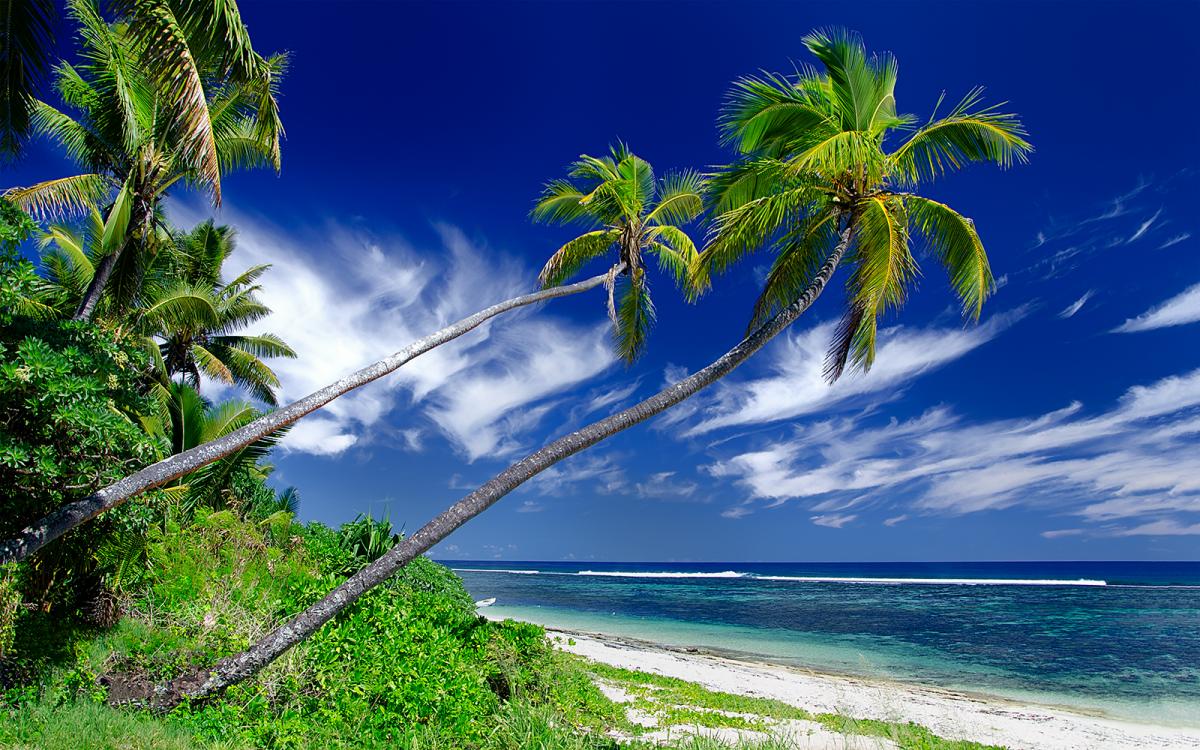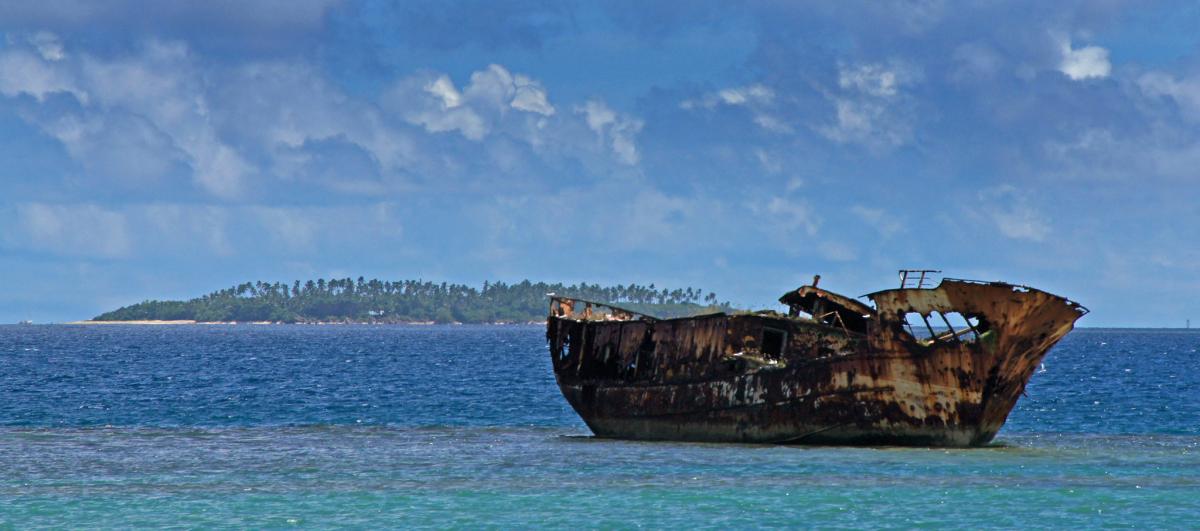K7AR and W7YAQ will be active as A31DL and A31DK from Nukualofa, Tongatapu Island, IOTA OC - 049, Tonga, 15 - 27 February 2024.
They will operate on HF Bands, including activity in ARRL DX CW Contest.
Recent DX Spots A31DL
A31DL Log searchA31DK Log searchRecent DX Spots A31DK
QSL for A31DL via K7AR direct, LOTW, ClubLog OQRS.
QSL for A31DK via W7YAQ, LOTW.
A31DL A31DK Tonga News 21 February 2024
As you know we have had issues and challenges at A31DL. After 5 days of looking at these issues and looking at ways to resolve them, we can say all issues that we know of have been resolved. We now have two fully functional stations with KPA500 Amps. Here's more detail for those interested.
AC Mains Voltage
------------------------------
When we arrived we just plugged in our equipment and expected the equipment to work. Well with AC Mains varying up to and over 300 volts this damaged equipment. Bob asked the local power company to look into this problem, and they were quite responsive. They replaced hardware on a nearby power pole, and the Mains voltage is now a consistent 234V.
12V Power Supplies
------------------------------
We both carry Power Werx SS-30DV 12 volt power supplies. Both supplies were damaged as a result of excessive AC input. We were incredibly lucky to find an electronics repair shop in downtown Nuku'Alofa that said they could repair the 12V supplies. One supply was repaired by replacing a bridge rectifier, large electrolytic cap, and a few smaller caps that exploded. The shop didn't have the parts on hand to fix the other supply. But they said we could buy a new 12V supply from them which we did. So now have two working 12V supplies.
KPA500 Amplifiers
--------------------------
Both KPA500 amplifiers displayed error fault codes and blew fuses when plugged in. Luckily the fuses prevented any additional damage to the amps. Both seem to be working normally now with the correct AC input voltage.
Interstation Interference
-----------------------------------
Having two 500W stations within a hundred feet of each other has proven difficult on every expedition we go on, and this one is no exception. When both stations run in FT8 Fox mode there is no issue as we transmit and receive on the same 15 second cycle. But if one or both stations want to run CW we have issues. It's an ongoing discussion on ways to resolve this.
Putting up a 160 antenna took a back seat to other issues. We will try tomorrow to get the 160 inverted L and pennant loop on the air.
We'll be here until Feb 27 please look for us on the air, 73, Al, K7AR and Bob, W7YAQ
A31DK A31DL
A31DL A31DK Tonga News 16 February 2024
Today started out very pleasant, our QTH is 1/4 mile from the ocean on the North side of the island with nice ocean breezes. We had a large (free) breakfast at the cafe owned by the owner of our QTH. And it was right across the street from the government facility where we picked up our license. We had a nice chat with the telecom official and received our licenses, laminated in plastic.
We returned to the QTH and proceeded to get antennas setup. That's when Murphy came to visit. Many times. We knew something was wrong when I received an electrical shock from the ground plate of the DX Commander antenna. We suspected the AC Mains were ungrounded.
My KPA500 displayed a 60V HIGH fault, something it has never done before. We measured the AC Line voltage and found it was variable, anywhere from 230 to 290 VAC or higher. The KPA500 then proceeded to blow a fuse. Bob and I then decided we didn't want to risk the amps getting further damage, and have disconnected them from the stations. This means we are running the K3 at 100 watts output.
Murphy then visited Bob's station. His Power Werx SS-30DV power supply didn't put out any voltage. He thinks this may be due to a thermal protection circuit but the power supply has not come yet come back to life. Bob is attempting to rush ship a new 12V power supply here. Meanwhile we're down to one 100 watt station.
Anyway unless Bob can get a new power supply we'll only use one station.
A31DL A31DK.
Tongatapu is a coral island in Polynesia
Tongatapu is the largest island of the 173 islands of the Kingdom of Tonga. It is located in the western region of the Pacific Ocean, in the region of Polynesia. New Zealand is 1,750 km south of it, and Tongatapu has a maritime border with Samoa and the Fiji archipelago to the north and west. It is a coral island of about 257 km2 and is a raised atoll with shallow lagoons, Fangakakau and Fanauta, forming the northern part of the island.
Tongatapu, along with several nearby reefs, is located in the area where two lithospheric plates, the Australian and Pacific plates, collide. The island itself is the top of an underwater ridge and was formed by limestone deposits of ancient microorganisms - corals - about 2.5 million years ago, during the Pleistocene epoch.
 Tongatapu, Tonga. Author - Wort Schnipsel.
Tongatapu, Tonga. Author - Wort Schnipsel.
Brave seafarers
During excavations near one of the lagoons of Tongatapu researchers found the remains of clay pots and beads, which were characteristic of the ancient culture of the Lapita people. Archaeologists concluded that the island began to be settled by natives of Samoa in the 10th century B.C. These were warlike settlers who made sea voyages from here to the more southern islands of Oceania, taxing the inhabitants of the customs.
2000 years later, in the 10th century AD, Tongatapu became the seat of the Tui Tonga, the rulers of a legendary dynasty. The island was the center of the Tongan Empire and at different times its capitals were founded on its territory: Toloa, Heketa. In 1220 the town of Mua became the main settlement in the empire, where sacred rites were performed and clan chiefs were elected.
One of the first Europeans to discover the island in 1643 was Abel Tasman, a Dutchman who made a long voyage to the Polynesian region. He gave the island the name "Amsterdam". In 1777 the famous James Cook, an English explorer and captain, visited these shores. In the early 19th century, a Christian mission was established here and the Tongans were forcibly converted to the Catholic faith. The kings still ruled over their subjects, but in 1900 they were forced to sign a treaty with Great Britain, which established an English protectorate over the island. It was not until 1970 that Tongatapu gained independence as part of the Kingdom of Tonga.
 Tongatapu, Tonga. Author - San-Tus.
Tongatapu, Tonga. Author - San-Tus.
Tropical Monsoons
The island is located in the tropical climate zone and the average annual temperature ranges from + 21 to + 27 C°. The hottest time of the year is from January to March. Then also falls the largest amount of precipitation: up to 1700 mm. In May, the eastern monsoon begins to blow, and in October-February near Tongatapu pass tropical cyclones, when the ocean water area is dominated by trade winds.
The relief of the island is low-lying. There are small uplands only in the southern part of Tongatapu. The soils are of limestone origin and are covered with a meter layer of volcanic ash. Once the whole territory of the island was covered with tropical rainforests, but over time most of them were cut down for agricultural purposes. The flora is represented by plants from the myrtle family, as well as perennial, evergreen shrubs and lantana thickets. Near the main town of Tongatapu, Nuku'alofa, there are beautiful orchids. There are few animals left on the island: 11 species of lizards and 3 species of bats. Bird colonies nest on local beaches, and near the coral reefs in the water swarms of colorful fish. Giant sea turtles can also be found here.
 Nukualofa, Tontatapu Island, Tonga. Author - Peter Jennings NZ.
Nukualofa, Tontatapu Island, Tonga. Author - Peter Jennings NZ.
The royal palace and zucchini bushes
Tongatapu is home to more than 73,000 people. They are mostly descendants of the first settlers on the island, the Tongans (over 95%). The Polynesian people retain some of their customs and beliefs. The islanders communicate in English and the Tonga language.
The fertile soils of Tongatapu produce good crops. The locals grow bananas, cocoa, flavored coffee, as well as ginger and zucchini. These crops account for a large share of the island's exports. In the coastal waters they breed pearl mussels, catch valuable mollusks and more than 20 species of fish. There is an international airport on the island.
One third of the total population of Tongatapu lives in the main city and capital of the whole kingdom - Nuku'alofa. It was here, on the shore of the bay, that the Royal Palace was erected in 1864. The two-story building with a ruby roof, built in the colonial style of kauri wood, today serves as a residence for the head of state. Near the city, on the shore of the Pacific Ocean, preserved ancient fortifications of the first inhabitants of Oceania, who defended their native shores 2000 years ago from the warlike Polynesians. In the east of the island you can find burials of Tongan rulers and nobles: ruins of tombs with the remains of weapons and pearl jewelry.
Tongatapu is a coral island in Polynesia, a center of ancient culture and a stronghold of the once powerful Tongan Empire!

